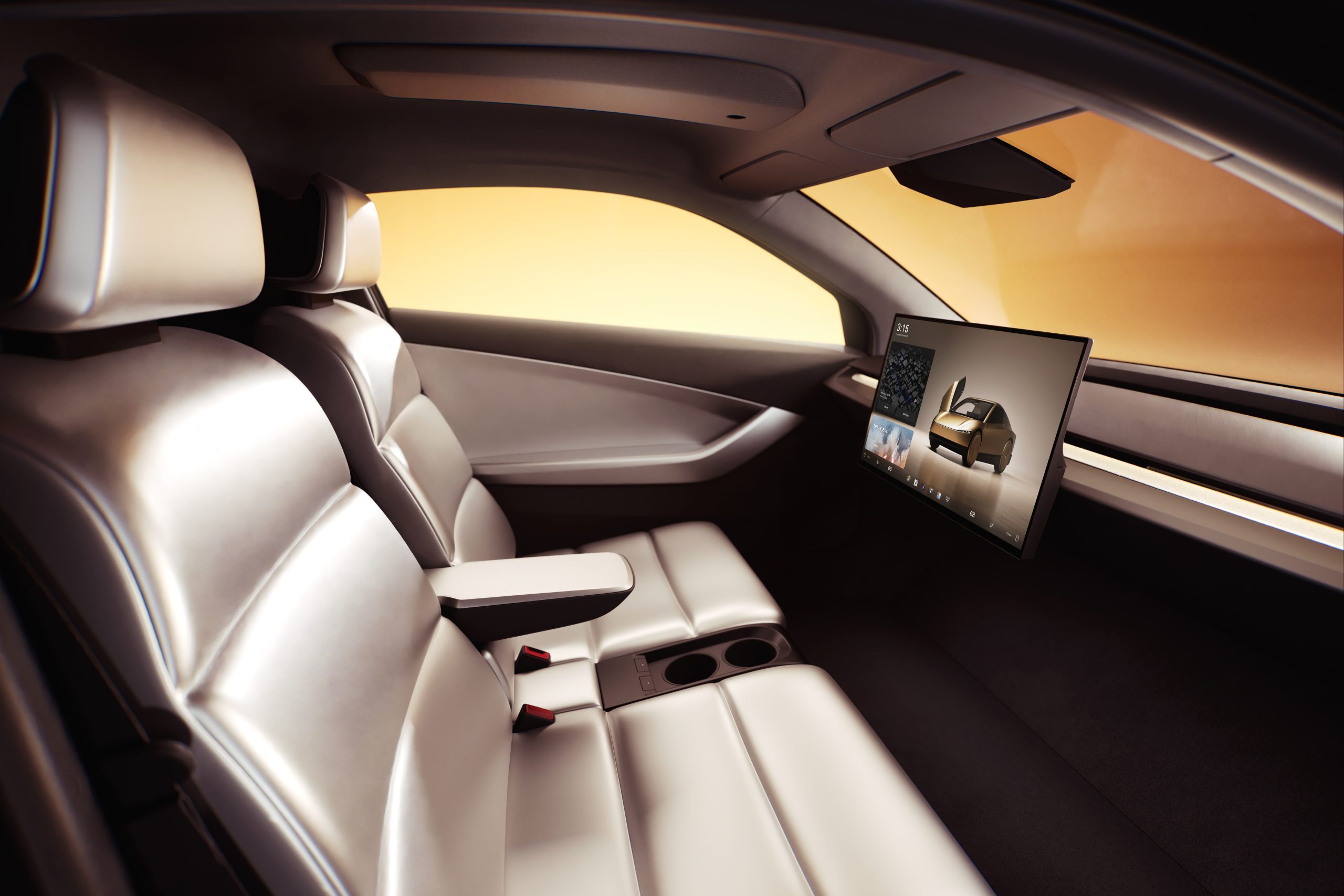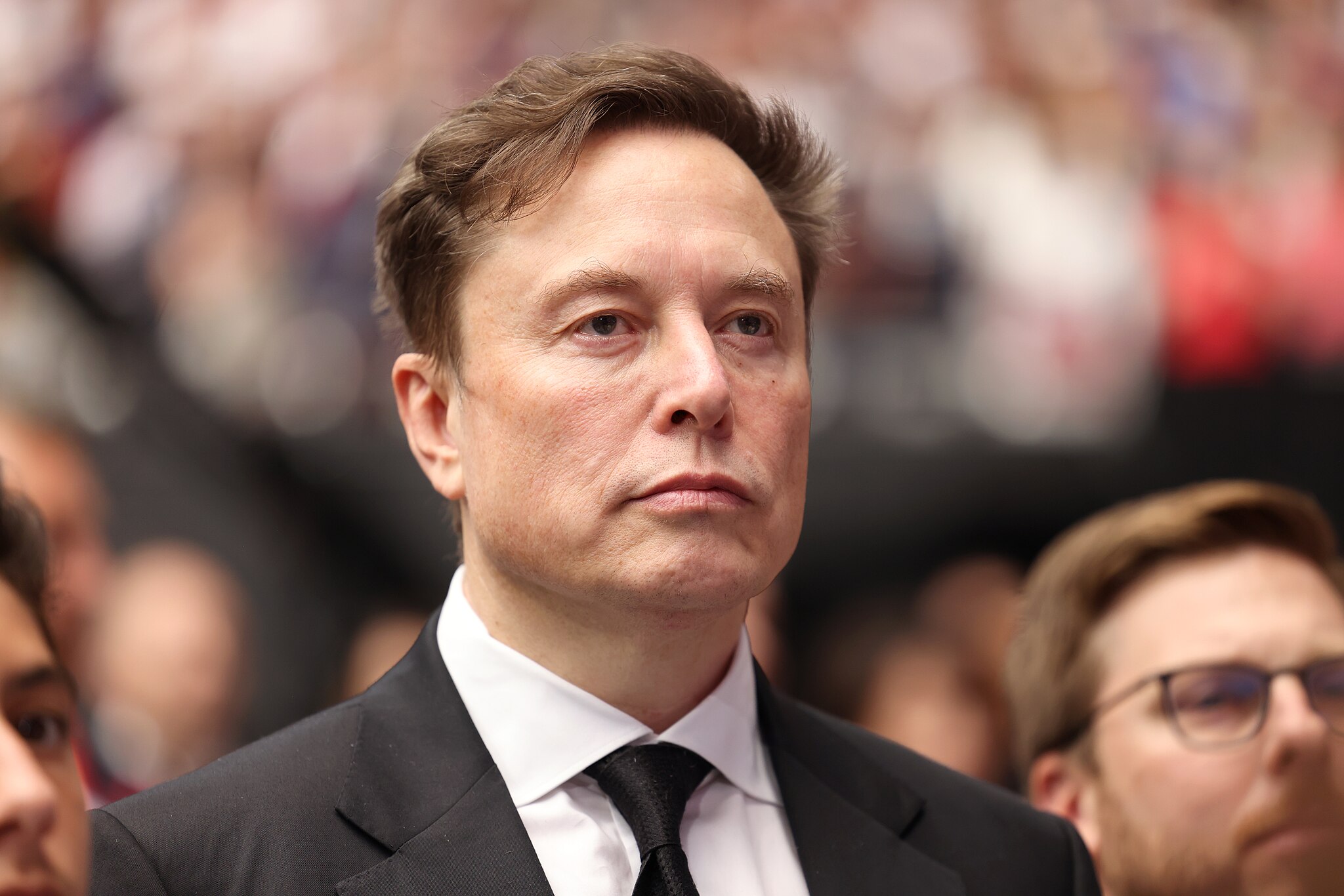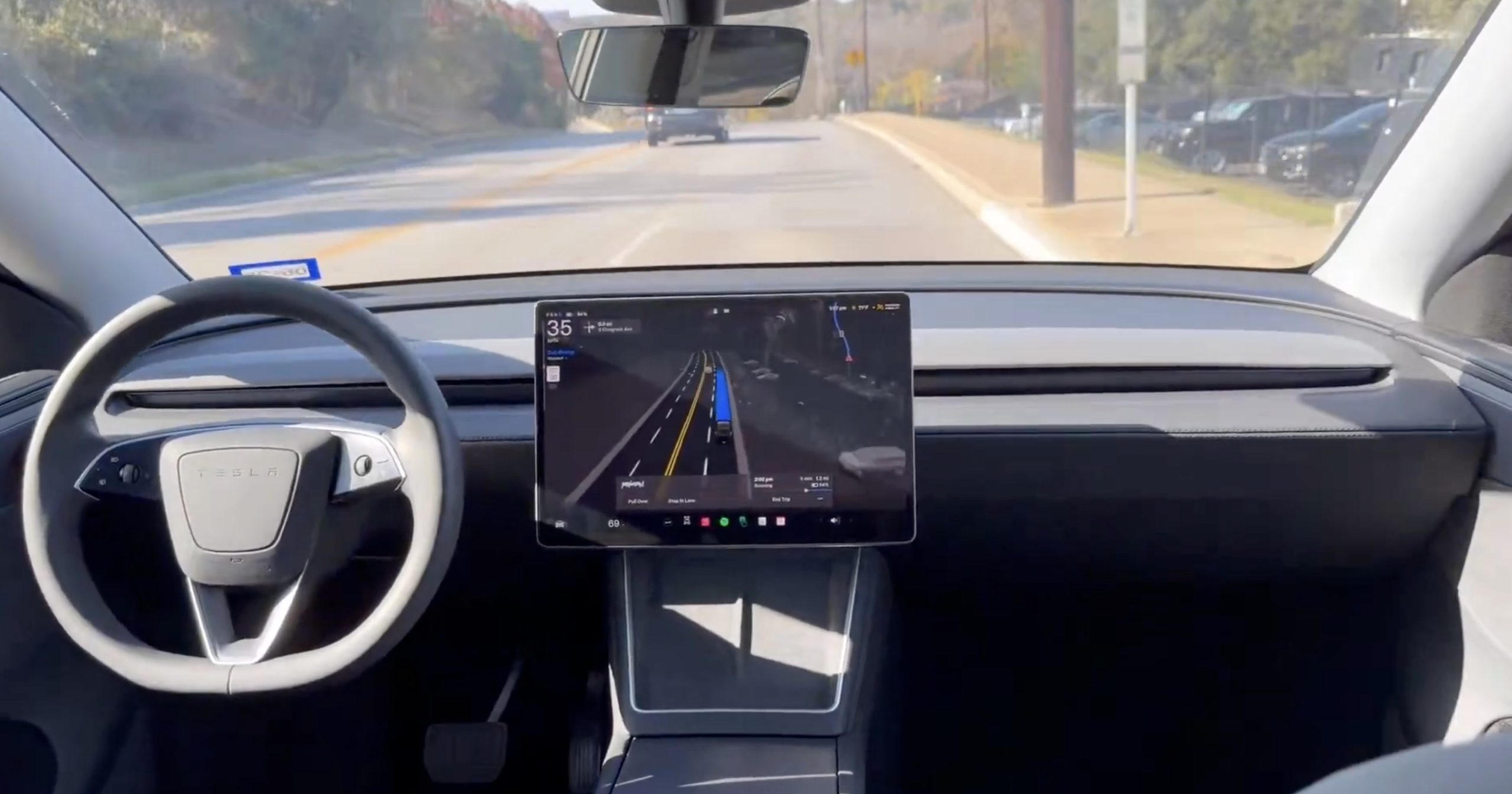Elon Musk
Tesla Robotaxi deemed a total failure by media — even though it hasn’t been released
Nearly two weeks before it is even set for its planned rollout, Tesla Robotaxi has already been deemed a failure — even though it is not even publicly released.

Tesla Robotaxi is among the biggest tech developments of the year, and its June launch date has not yet arrived.
This does not matter to skeptics of the company, as they have already deemed the rollout a “failure,” “an enormous mess,” and plenty of other adjectives. No matter what, several outlets are already leaning on biased opinions and a lack of true evidence that points in any direction.
Futurism posted an article this morning claiming that Robotaxi is “already an enormous mess,” citing the opinions of Dan O’Dowd, perhaps Full Self-Driving’s biggest critic. There is no mention of any of the excitement or prosperity that would come from the opposite side of the argument.
Instead, it included that O’Dowd felt it was a failure in an 80-minute drive around Santa Barbara.
This is fair to include: Full Self-Driving is not perfect, which is why Tesla will implement safeguards like teleoperation at first. However, it’s not like it’s so awful it isn’t even remotely close. Personally, my experience with FSD was incredibly successful, responsible, and it was something I still wish I had on my car to this day. I wish the article would have included a quote from someone who is as equally passionate about FSD, just from the other side of the argument.

Credit: Tesla
There is no mention of Tesla’s most recent Vehicle Safety Report, which showed Autopilot-enabled cars are nearly 10x less likely to be involved in an accident compared to the national average. This might not be the same as Full Self-Driving, but it is still a testament to what Tesla has achieved with its driver assistance systems.
To be fair, Tesla has been a company that has missed timelines, especially when it comes to FSD. I used to roll my eyes a bit when CEO Elon Musk would say, “We’ll have Full Self-Driving finished by the end of the year,” or “We’ll have a million robotaxis on the road next year.” I was always skeptical.
However, Tesla has handled things differently this year. They’ve admitted the Robotaxi rollout will be controlled at first, including a fleet of only 10-20 Model Y vehicles. It will be private at launch, and only the lucky invited will have the opportunity to experience it in Austin in June.
It might be less than a public rollout, which of course, for people like you and me, is disappointing. But let’s be real: if Tesla launched a full-blown Robotaxi platform with no regulations or small-batch testing, there would be criticism of that, too.
Some media outlets are pointing to the recent NHTSA request for more information on how Tesla’s tech will “assess the ability of Tesla’s system to react appropriately to reduced roadway visibility conditions.” This seems more than reasonable as Robotaxi will be among the first driverless ridesharing programs in the United States.
Tesla gets new information request from NHTSA on Robotaxi rollout
It’s no more than a request for information on how things will be handled and how the tech works.
It is sad to see so many outlets already deem something that could be the next big thing as a failure, despite there being no real indication of it being that or a success. Let’s be fair and give Tesla an opportunity to meet its June target and Robotaxi some time to operate and prove to be a reliable ride-share option.

Elon Musk
Tesla’s Elon Musk accepts invitation to Israel’s Smart Transportation Conference
The announcement was shared by the Israeli Prime Minister in a post on social media platform X.

Elon Musk has reportedly accepted an invitation from Israeli Prime Minister Benjamin Netanyahu to participate in the country’s Smart Transportation Conference in March 2026.
The announcement was shared by the Israeli Prime Minister in a post on social media platform X.
A call and an invitation
Netanyahu posted on X about Musk, stating in Hebrew: “Last night, I held a joint conference call from Florida with entrepreneur Elon Musk, Minister of Transportation Miri Regev, and the head of the National AI Headquarters, Erez Askal. In the framework of the conversation, Musk responded to my invitation and Minister Regev’s invitation to participate in the Smart Transportation Conference that will be held in March.”
Netanyahu added that he and Musk discussed continuing initiatives such as the promotion of autonomous vehicle laws and the boosting of AI technologies in Israel. This, according to the Prime Minister, is aimed at making the country a global leader in emerging technologies.
“Additionally, we discussed the continuation of collaborations with Tesla and the promotion of the law pertaining to autonomous vehicles. I spoke at length with Musk about promoting and developing artificial intelligence technologies in Israel, and I said in our conversation: We intend to catapult Israel and turn it into a global leader in the field, just as we did in cyber and other technologies,” Netanyahu added.
Tesla FSD’s upcoming rollout in Israel
Elon Musk’s upcoming conference appearance in Israel could hint at Tesla’s upcoming rollout of FSD and its Robotaxi service in the country. Previous reports have hinted that FSD is nearing regulatory approval in Israel, following strong advocacy from local owners and direct intervention from the government.
Nearly 1,000 Tesla drivers petitioned authorities, highlighting FSD’s potential to enhance road safety. Transport and Road Safety Minister Miri Regev responded positively on X, writing “I’ve received the many referrals from Tesla drivers in Israel! Tesla drivers? Soon you won’t need to hold the steering wheel.”
Minister Regev has instructed the ministry’s Director-General to accelerate the approval process, including necessary tests. A dedicated working group, led by Moshe Ben-Zaken, is also coordinating with regulatory and safety agencies to meet international standards.
Elon Musk
Elon Musk and Tesla AI Director share insights after empty driver seat Robotaxi rides
The executives’ unoccupied tests hint at the rapid progress of Tesla’s unsupervised Robotaxi efforts.

Tesla CEO Elon Musk and AI Director Ashok Elluswamy celebrated Christmas Eve by sharing personal experiences with Robotaxi vehicles that had no safety monitor or occupant in the driver’s seat. Musk described the system’s “perfect driving” around Austin, while Elluswamy posted video from the back seat, calling it “an amazing experience.”
The executives’ unoccupied tests hint at the rapid progress of Tesla’s unsupervised Robotaxi efforts.
Elon and Ashok’s firsthand Robotaxi insights
Prior to Musk and the Tesla AI Director’s posts, sightings of unmanned Teslas navigating public roads were widely shared on social media. One such vehicle was spotted in Austin, Texas, which Elon Musk acknowleged by stating that “Testing is underway with no occupants in the car.”
Based on his Christmas Eve post, Musk seemed to have tested an unmanned Tesla himself. “A Tesla with no safety monitor in the car and me sitting in the passenger seat took me all around Austin on Sunday with perfect driving,” Musk wrote in his post.
Elluswamy responded with a 2-minute video showing himself in the rear of an unmanned Tesla. The video featured the vehicle’s empty front seats, as well as its smooth handling through real-world traffic. He captioned his video with the words, “It’s an amazing experience!”
Towards Unsupervised operations
During an xAI Hackathon earlier this month, Elon Musk mentioned that Tesla owed be removing Safety Monitors from its Robotaxis in Austin in just three weeks. “Unsupervised is pretty much solved at this point. So there will be Tesla Robotaxis operating in Austin with no one in them. Not even anyone in the passenger seat in about three weeks,” he said. Musk echoed similar estimates at the 2025 Annual Shareholder Meeting and the Q3 2025 earnings call.
Considering the insights that were posted Musk and Elluswamy, it does appear that Tesla is working hard towards operating its Robotaxis with no safety monitors. This is quite impressive considering that the service was launched just earlier this year.
Elon Musk
Starlink passes 9 million active customers just weeks after hitting 8 million
The milestone highlights the accelerating growth of Starlink, which has now been adding over 20,000 new users per day.

SpaceX’s Starlink satellite internet service has continued its rapid global expansion, surpassing 9 million active customers just weeks after crossing the 8 million mark.
The milestone highlights the accelerating growth of Starlink, which has now been adding over 20,000 new users per day.
9 million customers
In a post on X, SpaceX stated that Starlink now serves over 9 million active users across 155 countries, territories, and markets. The company reached 8 million customers in early November, meaning it added roughly 1 million subscribers in under seven weeks, or about 21,275 new users on average per day.
“Starlink is connecting more than 9M active customers with high-speed internet across 155 countries, territories, and many other markets,” Starlink wrote in a post on its official X account. SpaceX President Gwynne Shotwell also celebrated the milestone on X. “A huge thank you to all of our customers and congrats to the Starlink team for such an incredible product,” she wrote.
That growth rate reflects both rising demand for broadband in underserved regions and Starlink’s expanding satellite constellation, which now includes more than 9,000 low-Earth-orbit satellites designed to deliver high-speed, low-latency internet worldwide.
Starlink’s momentum
Starlink’s momentum has been building up. SpaceX reported 4.6 million Starlink customers in December 2024, followed by 7 million by August 2025, and 8 million customers in November. Independent data also suggests Starlink usage is rising sharply, with Cloudflare reporting that global web traffic from Starlink users more than doubled in 2025, as noted in an Insider report.
Starlink’s momentum is increasingly tied to SpaceX’s broader financial outlook. Elon Musk has said the satellite network is “by far” the company’s largest revenue driver, and reports suggest SpaceX may be positioning itself for an initial public offering as soon as next year, with valuations estimated as high as $1.5 trillion. Musk has also suggested in the past that Starlink could have its own IPO in the future.








